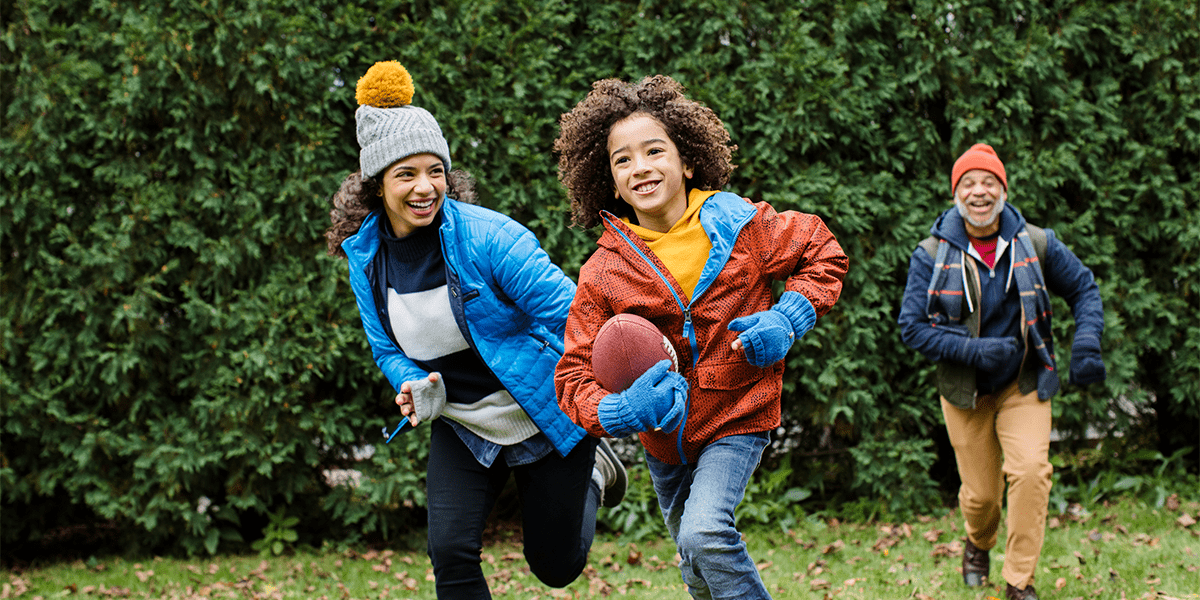Do biological relatives have the same genetic ancestry results?

For many people, the holidays are a time when relatives—including those distant cousins you’re not sure if you’re actually related to—come together in celebration. And whether it’s around the dinner table or the Festivus pole, there’s a good chance that conversation will eventually turn towards the topic of genetics, with comments like “She’s a spitting image of her mother” and “It must run in the family.”
Genetic inheritance is really complex, which helps explain why some biological family members look a lot alike, while others may not. Your sibling may have inherited DNA that codes for blue eyes from your paternal great grandfather, while you may have inherited DNA that codes for hazel eyes from your maternal great grandmother, for example. In short, we all inherit a unique patchwork of traits from our ancestors—which is exactly why we all have a unique genetic ancestry.
As surprising as it may sound, it’s possible that biologically related members of the same family could take a genetic ancestry test, and receive dramatically different test results. Here’s one reason why.
DNA is not always inherited evenly from our ancestors
We tend to talk about DNA as a singular object, as in “your DNA.” However, this is a bit of a simplification. In reality, your DNA is made up of 46 chromosomes—relatively large structures where DNA is wrapped around proteins. Within these 46 chromosomes, there are two sets of 23 chromosomes. One set is inherited from your biological father, and the other from your biological mother. For the most part, the 23 chromosomes you inherit from one parent are nearly identical to those inherited from the other parent (with the 23rd pair, the sex chromosomes, being an exception).
It helps to think of each set of 23 chromosomes like a recipe book containing 23 recipes for 23 different foods. If the first recipe is for apple pie, then you would inherit two recipes for making apple pie—one from each parent. However, there may be subtle differences between the recipes. For example, your mother’s recipe may tell you to use butter for the pie crust, while your father’s tells you to use shortening. Translating this analogy back into genetics, you inherit two copies of chromosome 1. Each copy is almost identical except for some subtle differences in the DNA sequence between the two chromosomes (scientists call these differences variants). If those changes happen to affect eye color, then you might have two versions of a gene related to eye color: one that codes for blue eyes and one that codes for brown eyes.
So how does this affect ancestry test results? It comes down to random chance. Consider the 23 chromosomes you inherit from your biological father: These 23 chromosomes were selected from your biological father’s collection of 46 chromosomes. Remember that, just like you, your biological father inherited two sets of 23 chromosomes from each of his parents. When selecting DNA that will be passed onto the next generation, the human body will package only one set of 23 chromosomes into the sperm or egg. This way, when a sperm and egg meet, the fertilized egg will have the appropriate number of chromosomes (46). Importantly, the 23 chromosomes selected to be passed on are chosen mostly at random. Whether you get chromosome 1 from your grandma or your grandpa is determined randomly. The same is true for each of the 23 chromosome pairs.

Biological relatives can inherit different portions of a family’s genetic ancestry
Because of this, it’s theoretically possible for members of the same family to inherit different genetic ancestries. An extreme example of this would be if you inherited all 23 chromosomes from your grandfather’s set, while your biological sibling inherited 23 chromosomes from your grandmother. In this unlikely event, you would be inheriting a lot more genetic ancestry from your grandfather than from your grandmother, and, this means you may seem to have a higher percentage of genetic ancestry from your grandfather’s ancestors than your sibling does.
When considering how your genetic ancestry compares to your cousins, nephews, nieces, and other relatives, the same concepts apply. It’s all a matter of what unique sets of DNA you happen to inherit from your common ancestors. (There’s a lot more going on here, so if you want to know how recombination contributes to this, how ancestry and culture differ, or are eager for more detail on how siblings can have different results, we’ve got you covered! Learn about all the fascinating science behind ancestry testing here!)
So get ready to drop some knowledge about the intricacies of genetic inheritance on everyone in the extended family this holiday season! We promise it’ll go over even better than the Festivus airing of grievances.